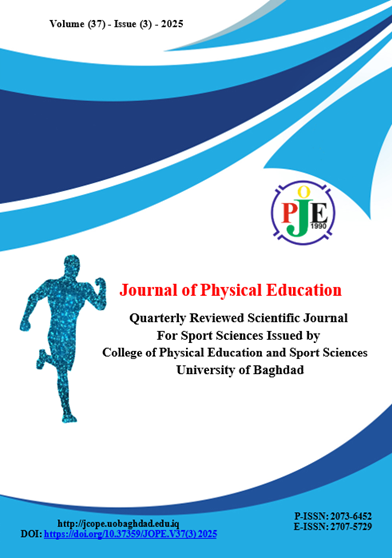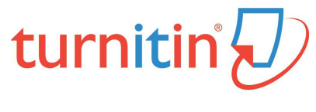Analysis of Training Load During the Special Preparation and Competition Periods Using Physiological Indicators in U19 Football Players via Smart Bracelet
DOI:
https://doi.org/10.37359/JOPE.V37(3)2025.2355Keywords:
Training load, smartwatches, heart rate, calories, training periodsAbstract
The importance of the study lies in highlighting the role of smartwatches as a modern tool for analyzing training load based on functional indicators, such as heart rate and calorie consumption. This allows coaches to monitor individual players’ responses during different training periods, helping to improve physical performance efficiency and reduce the risk of overload-induced fatigue. The study aimed to analyze calorie consumption at different heart rate levels between the special preparation and competition periods for youth football players, with the goal of determining the effect of physiological adaptation on energy efficiency. To achieve this objective, the researcher adopted the descriptive method due to its suitability for the nature of the study. A purposive simple sample of 20 youth players representing the youth team of Al-Quwa Al-Jawiya Club was selected, with weights ranging between 60–75 kg. A pilot experiment was conducted on a small sample of players to test the accuracy of smartwatches in measuring heart rate and calorie consumption by comparing them with standard measurement devices. The results showed good agreement in heart rate measurement and a slight deviation in calorie consumption, confirming their validity for use in the study after calibration.
References
Abdulghani, L. Y., Abdulghani, M. Y., & Abdulkareem, O. W. (2025). Designing a palm pressure measurement device to improve motor coordination in freestyle swimming among female students. Journal of Physical Education and Sport, 25(7), 1506–1513. https://doi.org/10.7752/jpes.2025.07168
Abdulhussain, A. A., Abdulkareem, O. W., Atiyah, H. S., Jaber, O. H., Ghanim, M. R., Hammood, A. H., & Saleh, Y. M. (2025). The Impact of Jesko’s Strategy with Sequential Exercises on Learning the Skill of Dribbling in Basketball. Annals of Applied Sport Science, 0–0. https://doi.org/10.61186/AASSJOURNAL.1550
Abdulkareem, O. W., & Ali Hassan, M. F. (2025). impact of mental games on improving shooting accuracy among young basketball players in Iraqi clubs. Scientific Journal of Sport and Performance, 4(3), 342–351. https://doi.org/10.55860/OHNP7224
Abdulkareem, O. W., & Sattar Jabbar, H. (2025). Comparative Biomechanical Analysis of Three-Point Shooting Between Elite Iraqi Basketball Players and International Counterparts. Journal of Sport Biomechanics. https://doi.org/10.61186/JSportBiomech.11.3.326
Buchheit, M., & Laursen, P. B. (2013). High-intensity interval training: Solutions to the programming puzzle. Sports Medicine.
Easa, F. A. W., Shihab, G. M., & Kahdim, M. J. (2022). the Effect of Training Network Training in Two Ways, High Interval Training and Repetition To Develop Speed Endurance Adapt Heart Rate and Achieve 5000 Meters Youth. Revista iberoamericana de psicología del ejercicio y el deporte, 17(4), 239-241.
Gatterer, H., et al. (2014). Wearable sensors for monitoring training load. International Journal of Sports Physiology and Performance.
Helgerud, J., et al. (2007). Aerobic endurance training improves soccer performance. Medicine & Science in Sports & Exercise.
Hussain, F. M., Shuhaib, M. H., & Hassan, M. F. A. (2024). Psychological Toughness and its Relationship to Some Coordination, Physical Abilities and Accuracy of Some Basic Skills Performance Among The Iraqi Junior National Handball Team Players. International Journal of Disabilities Sports and Health Sciences, 7(Special Issue 2): The Second International Scientific Conference: Sports for Health and Sustainable Development,(SHSD, 2024)), 330-336.
Issurin, V. B. (2010). New horizons for the methodology and physiology of training periodization. Sports Medicine.
Jones, A. M., et al. (2021). Training load and physiological adaptations in elite athletes. Sports Medicine.
Kadhim, M. J. (2023). Examining The Relationship Between Social Classes And The Culture Of Poverty: A Case Study. International Journal of Social Trends, 1(1), 23-27.
Meeusen, R., et al. (2013). Prevention, diagnosis and treatment of the overtraining syndrome. European Journal of Sport Science.
Mujika, I., & Padilla, S. (2003). Scientific bases for precompetition tapering strategies. Medicine & Science in Sports & Exercise.
Plews, D. J., et al. (2017). Monitoring training with wearable technology. Journal of Sports Sciences.
Downloads
Published
Issue
Section
License
Copyright (c) 2025 Journal of Physical Education

This work is licensed under a Creative Commons Attribution-NonCommercial 4.0 International License.






 The Journal of Physical Education (JOPE) applies a Creative Commons Attribution 4.0 International license (CC BY 4.0), which lets others distribute, remix, tweak, and build upon your work, even commercially, as long as they credit you for the original creation. For more information, click the link :
The Journal of Physical Education (JOPE) applies a Creative Commons Attribution 4.0 International license (CC BY 4.0), which lets others distribute, remix, tweak, and build upon your work, even commercially, as long as they credit you for the original creation. For more information, click the link : 